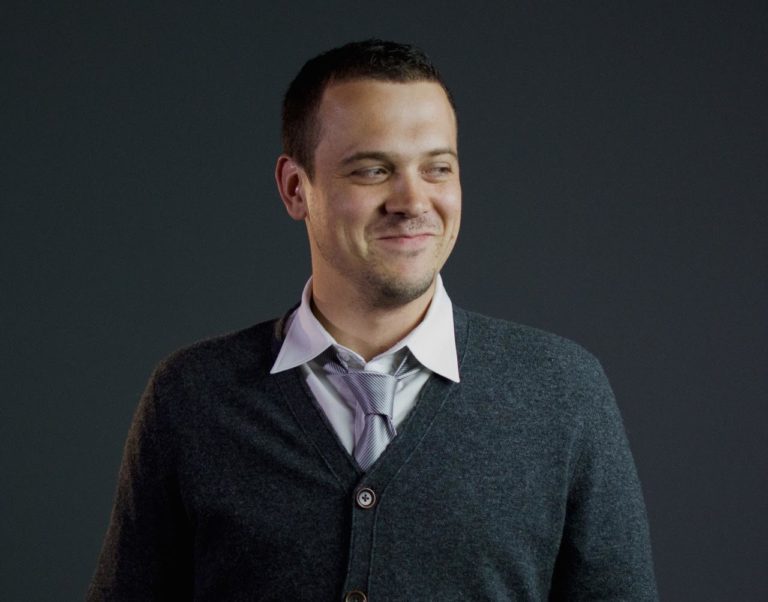This is probably what you’re thinking, “Another ‘tech trends to watch for in 2017’ list. NEXT!” We know, we know, but we couldn’t help it. 2017 is going to be a big year for video technology. With phones having amazing cameras and interactive video adoption on the rise, video for business is entering a new era. Because of this, we asked top video marketing experts to share with us what they think will be a big deal in 2017.
Video Tech Trend #1: Oversaturation of fads with the help of smaller and easier-to-use devices
Let’s start our list with a big idea with the help of our friend Patrick Moreau, founder of Muse Storytelling:
“As video gear continues to get smaller, more affordable, and the minimum skill required is reduced, I believe we’ll continue to see an over-saturation of the fads. Creatives will continue scrambling to embrace the new tools in a way that can help push them forward.”

For example, the big competition between the Google’s Pixel phone and the latest iPhone — it’s all about the camera that sits in our pockets. Almost anyone can make a full-length film with their own personal device. Plus, with the additional built-in features such as slow-motion, time-lapse, and panorama, these filming trends will only increase.
What does this mean for businesses? This is two fold. One, it can mean that more people will be entering the creative field and the talent pool will greatly increase. It might be difficult for businesses or agencies to find the right match for their product. Or, more importantly, it will be difficult to figure out what method to use to seem relevant, while also not being drowned out by the sheer volume of similar styles.
Video Tech Trend #2: Customers will seek the truth
Due to this over-saturation, Patrick also reminds us of the importance of authenticity and the “truth” in content.
“I see people beginning to look deeper into the motivations behind a piece. The ability to tell a story and create an authentic connection has perhaps never been as important as now. Those who look to use technology to serve their ability to connect will be the ones that thrive.”
This is the age of the truth-seeker. With more attention being paid to company transparency and social impact, those that can use video technology to showcase their philanthropy or office culture will be the most successful.
One of our favorites from 2016 is Wistia’s Rap-up video:
If we didn’t live in Chicago, we’d be knocking at the Wistia doors every Friday for happy hour. This video embodies their strong sense of team, focus on collaboration, and overall fun at the office. Having happy employees means pleasant people to work with (which is very important for prospective customers).
What does this mean for business? That you need to be true to your brand and show that you’re listening to the concerns of your customers because if you’re not, they’ll know right away. This means that you’ll need to invest more in high-quality content such as video blogs to show your company’s mission, values, and culture.
Video Tech Trend #3: Analytics have never been so important
Seems like an odd thing to include on this list right? You’ve been tracking your analytics forever. But hear us out, or at least hear out John Stokman from ilos Videos:

“Analytics and gating video content will become extremely valuable in 2017. By high-level video analytics, companies can gain insight into what product and help center videos people want to see giving power to the marketing team for messaging.”
It’s one thing to measure how successful your content is, it’s a whole new level to take action on what you learn. For example, we at Demo Duck get a lot of requests for “rush video projects” and if you’re fortunate enough to never had to do one, it’s when you have a lot of work to do, in short amount of time. We learned from our clients and leads that they were really interested in knowing how long it takes to make a video. With this blog post, we were able to share insights on our production timeline and tips for keeping things smooth.
John also talks about the importance of gating video. Gating is where you ask your viewers to enter in their contact information prior to viewing to get more leads.
“By gating specific marketing videos to gather leads, sales reps understand what feature their prospect is interested in and can begin a relevant conversation.”
If someone is willing to give up their email address (because we all know what’s going to happen to it), the content must be worth it. Sales managers and marketers should use that information to inform future campaigns. It’s all about learning what your customers want and, more importantly, listening to them.
What does this mean for business? It’s one thing to measure, it a totally different thing to learn from your findings. Take the time to review the data and to take action.
Video Tech Trend #4: Personalized video is here to stay
Take it away Erika Trautman (CEO and Co-Founder of Rapt Media):
“Personalized video pulls data about the user so that they see their own unique video.
With content that’s specifically addressed to each customer, customers feel engaged and like they’re having a live, one-to-one interaction.

From healthcare to insurance to telecoms to financial services, companies in all industries are harnessing the power of personalized video.
For example, a leading telecommunications company used Pitney Bowes’ EngageOne Video to create a personalized video experience to explain its bills to customers. The video, which allowed users to explore their actual bill within the video, resulted in a 24 percent increase in on-time bill pay and a 32 percent reduction in bill-related calls.”
Another great example we found is from AT&T. You can find it in our How 6 Industries Got Creative with Their Video Strategy.
What does this mean for business? Review what you know about your customers and what they want to know about you. Find ways to craft messaging that’s engaging, customized, and helpful. Personalized video is all about retention — your customer is already interested in you (they’re your customer), now it’s time to return the favor and be interested in them.
Video Tech Trend #5: Interactive video for the interactive learner
Erika also provides insight into interactive video:
“Interactive branching video is a great solution for both consumer and employee education.
By adding choices and interactivity to your video, you invite your employees and consumers to lean forward and participate.
The act of participation deepens engagement, enhances learning, and accelerates behavior change. It also generates data. With every click of a button, you gain useful insights about your audience
Like personalized video, companies across all industries are using interactive branching video. In people management, interactive video is being used for everything from recruitment to new-hire on-boarding to benefits enrollment to ethics and compliance. For example, we recently created our own interactive on-boarding experience, and our new hires have told us they appreciate learning about the company through a navigable, self-paced experience. We’re also saving $1,500 and four hours per employee.
Other areas we at Rapt Media see branching interactive video growing include learning and development, which is using interactive to drive and affect behavior in everything from interactive training to 401(k) administration to product education; and customer experience, which is using it for product training, how-to’s, on-boarding, and education.
[What does this mean for business?] No matter the industry or use case, the reason why companies are using interactive video is the same across the board: it drives deeper engagement, enhanced learning, and provides businesses with meaningful data and behavioral insights.”
Video Tech Trend #6: Online courses ups the ante for your content marketing strategies
Christopher Ruffell, a digital content manager for Reel Marketing (a video marketing magazine) says,
“Online course platforms such as Thinkific, Teachable, and Udemy rely on video as the foundation of their teaching paradigm. Studies have demonstrated how the combined use of imagery and sound in video unleashes the power of ‘picture superiority effect’, ‘multi-modal learning’ and ‘dual cording theory’ (source) greatly increase the ease of learning and memory retention for learners – there simply isn’t a more effective better way.”

Educational videos are a great way to build awareness and trust. If you provide customers with tangible solutions or ideas that they can use, more likely are they to develop a positive opinion of your business.
What does this mean for business? Creating online learning content is key to building a stronger reputation. If you use your blog, an online platform like Christopher mentioned, or a streaming source (such as YouTube), educational content keeps you at the forefront of your customer’s minds.
Video Tech Trend #7: High quality video in high demand
Now for one of our favorite writing tropes: the full circle. Christopher also mentions that with the accessibility of high-quality video technology, there are no excuses for low-resolution video:
“Using your DSLR camera or iPhone for video production has never been as effective or easy to do than it is now – 4K and full HD is everywhere now.”
What does this mean for business? With screens being sharper, viewers will have no tolerance for pixelated videos and those that don’t keep up, will lose out. This doesn’t mean you can’t use your phone to create interesting video content, we’re big fans of companies capturing daily office life and using it to promote their culture on social media. Just make sure that you pay attention to production quality and hire the experts for the big projects.
Wrap-up
We want to thank all of our experts that contributed to this article. With their insights we learned how the advancement of digital devices will feed into customer’s expectations of video content. Or, how content will be even more personalized than ever, Or, how we should learn from the data we collect.
If you have any video tech trends to share, add them in the comments below or tweetus.
Itching to learn more about video? Here are other great posts:
Client Communication and Producing Teamwork
